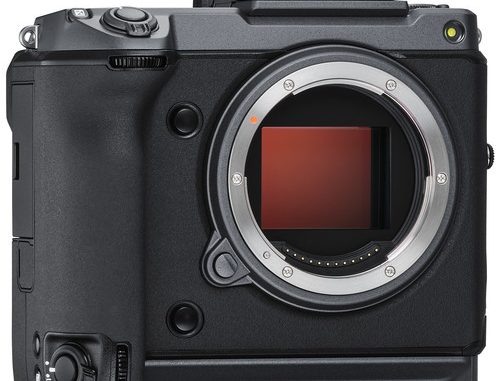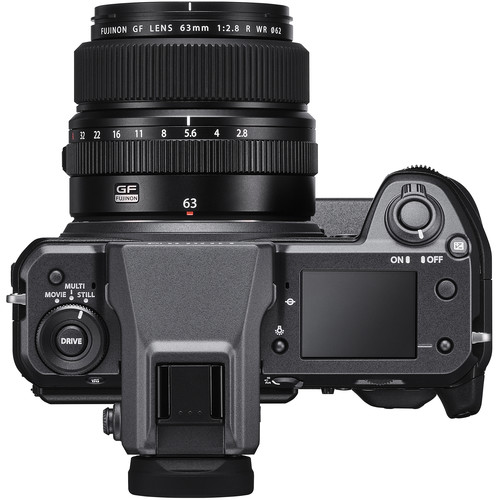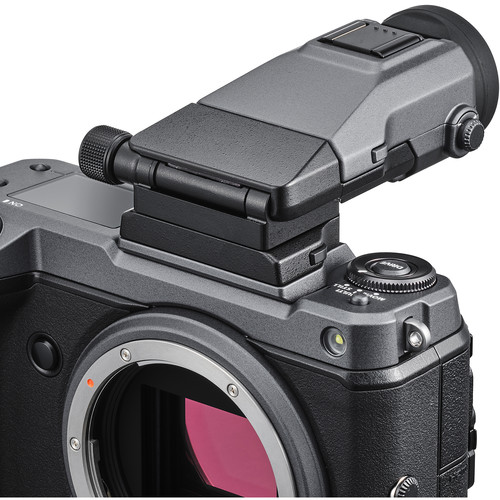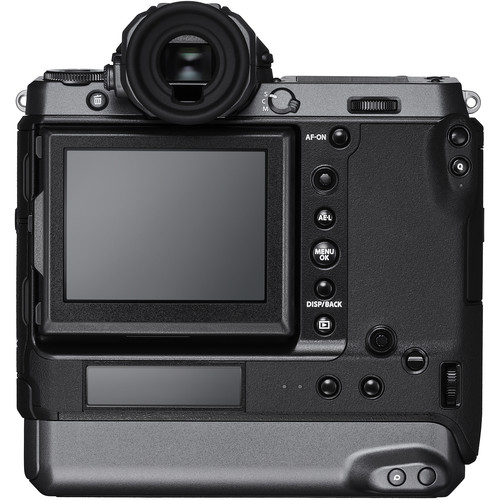
New FUJI 100MP Monster, New Lenny Kravitz Leica, NEW 21 1.4 E Mount…
A few new releases this week, some may be exiting to you and some may not but all are pretty UNIQUE in the world of digital photography.
This is a 100 Megapixel Medium Format sensor camera coming in at just under $10,000.
The GFX100 looks gorgeous (though large) and is the first Fuji Medium Format digital that I feel has a really nice design. Sort of looks like a Canon 1DX and looks to be built to a Hugh standard. Smooth sleek lines and I can only imagine what that 100MP sensor will be pumping out. The GFX100 is expected to ship in at the end of June 2019. This will be a studio shooters dream, a landscape shooters dream and those who love to crop, well, it doesn’t get much better than this for $10k. It even has a movie mode and a simple design that makes it that much more appealing. I will be keeping my eye on this camera as I can feel an itch coming on…lol. More info after the pics…
You can pre order the Fuji GFX100 at B&H Photo HERE.



102MP BSI CMOS Sensor and X-Processor 4
Utilizing a large and exceedingly high 102MP resolution 43.8 x 32.9mm BSI CMOS sensor and X-Processor 4, the GFX 100 is capable of delivering 16-bit stills with wide dynamic range as well as a broad sensitivity range of ISO 100-12800, which can be extended to ISO 50-102400. The large size of each pixel allows for more efficient light gathering, too, for smoother tonal and color transitions to produce a characteristic three-dimensional “medium format look.” Also contributing to several medium format looks, a variety of traditional medium and large format aspect ratios can be used in addition to the standard 4:3, including 1:1, 65:24, 5:4, 7:6, 3:2, and 16:9.
The image processor and sensor also lend a versatile edge to the system, and permit shooting continuously up to 5 fps or for recording DCI and UHD 4K30 video.
UHD and DCI 4K Video Recording
Utilizing the large sensor size for more than just stills, the GFX 100 also offers an enticing array of video capabilities, including internal UHD and DCI 4K30p video recording at up 4:2:0 10-bit, as well as 4K30p 4:2:2 10-bit via HDMI output, both at up to 400 Mb/s-and simultaneous external and internal recording is possible. Greatly benefitting overall video performance, the speed of the quad-CPU X-Processor 4 enables fast read speeds when recording 4K video, which helps to reduce rolling shutter distortion when filming moving subjects.
In addition to the supported 10-bit color depth, the GFX 100 also includes the F-Log gamma setting, which provides a flat picture for use in advanced color grading software during editing. This maximizes the potential dynamic range in difficult scenes and image adjustments can be made, as well, to highlight tone, shadow tone, color, and sharpness.
Also, the camera features a 3.5mm microphone jack and 3.5mm headphone jack for more advanced audio solutions.
Sensor-Shift Image Stabilization
Body Design
- Magnesium alloy body construction is both lightweight and durable, and the camera system is sealed in 95 places to render it weather- and dust-resistant, as well as freezeproof down to 14°F, for use in inclement conditions.
- Based on a modular concept, a removable 5.76m-dot OLED electronic viewfinder is included for high-resolution, 0.85x-magnification eye-level viewing with a refresh rate of 85 fps. This viewfinder can be paired with an optional EVF-TL1 Tilt Adapter for positioning the finder at a variety of working angles.
- The removable EVF connects with the camera body via the hot shoe, and the EVF features its own hot shoe to maintain compatibility with optional external flashes.
- A 3.2″ 2.36m-dot touchscreen LCD is also available for image playback, menu navigation, and live view shooting. This LCD features a unique tilting design that moves both 45° downward and 90° upward for shooting from high and low angles, and also tilts 60° to the side to benefit shooting in the vertical orientation when in live view.
- Integrated vertical grip offers a more ergonomic and secure design for holding the camera in either the horizontal or vertical shooting orientation. This design also affords more room for incorporating two sets of physical controls, shutter releases, and permits working with two batteries.
- Two NP-T125 rechargeable lithium-ion batteries are used to provide extended shooting times, and, when combined, are rated to approximately 800 shots per charge.
- Dual UHS-II SD memory card slots are featured, and permit saving imagery in a sequential manner, backup/duplicate manner, or in a sorted manner to segregate JPEG and raw files.
- The FUJIFILM G lens mount features a short focal flange distance of just 26.7mm to better facilitate adapting lenses and to allow for reduced back focusing distances to better prevent vignetting and promote edge-to-edge sharpness with the GF series of lenses.
- Mechanical focal plane shutter has a performance rating of approximately 150,000 shutter actuations. This shutter also uses a shock absorption mechanism to prevent unwanted shake caused by the physical movement of the shutter during an exposure.
- Both a 1.8″ sub LCD monitor on the top plate and a 2.05″ sub OLED monitor on the rear of the camera are also featured and are used to quickly view shooting settings and exposure data.
- Integrated Bluetooth 4.2 low energy and Wi-Fi allows you to wirelessly share images to a mobile device or use the device to remotely control the camera.
3.76m-Point Autofocus System
Other Camera Features
- Film Simulation modes allow you to reproduce the look and feel of several of FUJIFILM’s film types, including Provia, Velvia, Astia, Classic Chrome, Pro Neg. Hi, Pro Neg. Standard, Eterna, Acros, Monochrome, and Sepia. Additionally, Grain Effect can be adjusted as well as Classic Chrome effect to fine-tune the look of imagery.
- Interval shooting is possible for up to 999 consecutive frames with a 1 sec to 24 hour delay between exposures, as well as up to a 24 hours shutter delay.
- Multiple Exposure mode lets you shoot two consecutive overlaid frames, and the first frame will be shown on the rear LCD to aid in alignment for the second exposure.
- A variety of file formats are available depending on your workflow needs and include uncompressed and compressed raw file types; Super Fine, Fine, and Normal JPEG settings; and TIFF files can be output via in-camera raw file development.
- A voice memo function lets you solely record your voice for up to 30 seconds at a time for making notes or keeping track of shooting information.
- 3D Electronic Level can be used to ensure the accuracy of horizontal and vertical lines within your composition.



Well we gonna want latest just announced AMD RYZEN 3950X 16Cores 32Threads $700
Destroys Intel best $2000 $2K 18Cores 36Threads i9-9980XE.
Also latest just announced AMD X570 Motherboards have latest PCIe4 super fast 5000MB/s (5GB/s) data transfer for Nvme drives.
This will make handling GFX100 RAW files expanded to 500MB when opened in photo editing software a breeze.
Right since some cant seem to grasp benefits of GFX100
1. Arri Alexa, Red hollywood cameras have serious competition at fraction of their price.
Rigged up GFX100 with 4.2.2 4K 60Fps to external recorder is a DREAM Movie camera at 1/10 price.
2. 16bit color depth : yep compare it to 14bit color : shoot both RAW then catch your jaw drop GFX100 16 bit color depth.
3. Check out the shadows the tonal gradations in shadows : destroys best full frame.
4. Ridiculous processing latitude compared to best full frame. Files far more robust when processing compared to best full frame.
5. Larger Format action sports seeeesh.
*****
As for Halo product really : then why do high end hifi exist or sports cars or luxury watches or multimillion pound homes.
Seriously Stop being a potato : Broaden Horizons.
Hi,
I so much hope other cameras will follow with 16 bit at ever more affordable prices. I don’t really care about magapicel count. But I do care about medium format. I shoot medium format film which I scan at 16 bit and I’ve never run into limits postprocessing. What I see and want and what film captures can be so different. 16 bit for me is essential, certainly in black and white. I don’t just do heavy work, I shoot JPEGS real happily, too.
Concerning the 100 megapix, a thought: My grandfather was a pro photographer. He shot 6×9 and 4×5”. For clients he mainly made black and white glossy contact prints. I’ve got some of those, they haven’t aged at all. They have some kind of intensity, “bite”, I don’t know how to explain: These are 4,000PPI PRINTS!!! So 100 megapix may have big potential… Printer industry, a new challenge!
Dirk.
Dirk is absolutely correct. This camera is pure halo product in my opinion for rich amateurs and a few pros, but is of little use to most of us. A 4K image on a monitor only requires 8MB, and he is correct about prints. As Steve says, it would be fun to shoot with, but amateurs and pros who do not have specialist requirements for enormously sized outputs need not waste their time and money.
I have to say I agree. Lovely camera and specs but it is not needed by anyone for any reason in todays world. There is a difference however between “need” and “want” and many of us “want” many kinds of cameras and lenses ; ) That is what makes the world go round. Most cameras today, I would say up to 90% of them, are bought out of a want rather than need.
Sorry, in my post I mentioned galleries but made a typo. Galleries take 2/3 to 3/4th of the mone, not 4/4th!
Dirk.
Hi!
I once had a particularly nice Hasselblad Xpan panorama scanned by an Imacon at 8.000 pixels per inch, because I was curious. The negative was Kodak Ektar, finest grain there is they say, and negative size 24mmx65mm.
The 8,000 PPI scan was 150 megapixel. Normally I scan these shots at 3.000 PPI, about 30 megapixel.
The 8.000 magapixel scan showed a meaningful amount of detail which wasn’t just grain. But: the scan also showed the tiniest amount of motion blur, which wasn’t visible at all at 3,000 PPI but really there at 8,000. The lesson here for me was: 8.000 PPI does makes sense if you need it, but you’d better take a solid tripod, a wire release and wait for no wind!
I had a Fuij GX617, which at 8,000 PPI would make a scan of just short of one gigapixel. There are are drum scanners which do up to 13,000PPI! I get my drum scans done at 5,000PPI when I really need them.
File sizes of such high res scans (Of course 16 bit per channel TIF) are impressive, even with a few terabytes of disc space you fairly quickly get alarmed.
Amateurs who aren’t particularly rich: Beware! Shots at resolutions like this need to be enlarged to very large sizes to see what they’re worth, such prints cost a fortune mounted and no one can hang them so you can’t get rid of them! People with the money to buy them are most of the timeonly interested in what’s in the lower right corner, so don’t buy and galleries take 2/3rds or 4/4th of the money so you have no choice but to price you out of the market.
Just my two cents, been there.
And oh, yes, I shoot lots of film medium format. Rendering is totally different and much more beautiful than smaller sizes.
Dirk Dom.
@ Dirk you are living in the past hombre.
Plenty PRO Photographers happily switched to GFX, X1D.
No need to print billboard size : see the difference on 4K Calibrated monitor.
As for printing billboards : leave that to iPhones.
Impressive. A real pro camera of 2019, no more no less.
The technology is cool but I wish they would actually make a medium format size sensor, not just pack crazy pixel count into into a sensor that is in between 35mm ‘full frame’ and medium format. Because it is not about pixel count, but image rendering (for me at least!).
This 102mp sensor is only 44x33mm. Real medium format using 120 film is about 58mm high, and if you use something that gives 6×9 sized images (like a Fuji GW690 etc), that image size is about 80mm x 58mm. The standard Rolleiflex or Hasselblad is 58x58mm. The closest yet is the Phase One back at 53x40mm.
How about a real MF digital sensor to give that real MF rendering?
This will sell in small numbers, mostly to those who will not even need this kind of resolution. It’s a cool looking beast of a camera but really for pros who could use it to earn extra money. I’d never ever ever have a need for this kind of resolution personally but it could be fun to shoot!
Also, Steve, the 16-bit files will provide even smoother gradations of tones. I wish some 35mm cameras featured 16-bit support, but no one has stepped up yet. Anyway good that this technology is a little more affordable for a pro photographer.
Huss Silly Billy.
Proper MF size sensor :
1. MASSIVE COST
2. WONT have Phase Detect AF, 5Axis IS, 4K vid.